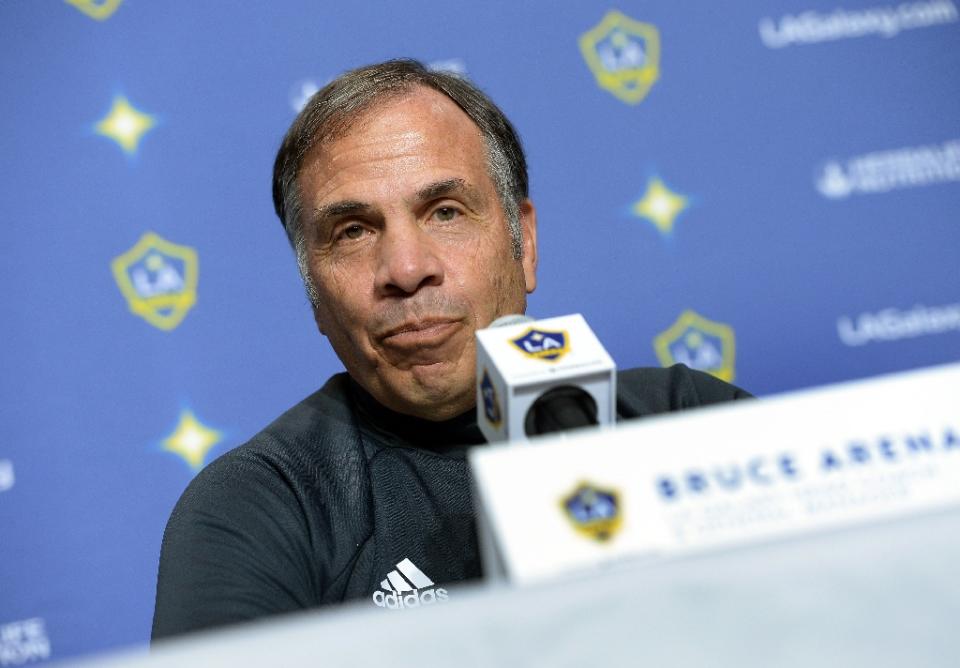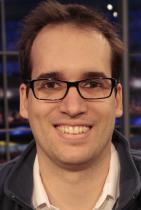Bruce Arena has a big job in fixing the USMNT, so we've made a handy to-do list
If there is to be an enduring lesson from the Klinsmann Era, it is that while change can be useful and necessary, it often turns destructive when implemented as a policy in its own right. Jurgen Klinsmann was a change candidate, a change coach. He promised more, bigger, better, higher and further. But he delivered a thinly disguised version of what was already there, a team that mostly bunkered and countered, ran a lot, played hard and relied more on its grit than its savvy or skill.
Klinsmann never stopped changing things. In five years and change, he continued to try stuff, even on the eve of major tournaments, or when results were finally swinging his way. This restlessness ultimately undid many of the genuinely positive changes he made, because the German would happen upon something useful – a formation, a pairing, a tactical approach – and then go and change it up again. With Klinsmann, it always seemed to be about the ideas more than letting those concepts play out and reach their natural conclusion.
Bruce Arena is not a change coach. Definitionally, he’s the opposite, since he already coached this team before. He was, in fact, the longest-serving U.S. coach ever prior to returning. And the only man to take the USA to two World Cups.
He can’t afford to change a whole lot this time around anyway. He has a contract through the 2018 World Cup, and that will likely be his last call. He’s 65 and will have served 2 ½ World Cup cycles. He’s supposed to put out the fire Klinsmann left him – a winless start to the final round of qualifying – and coax a decent performance from his team in Russia, once they qualify.

Still, there are a few things to correct and to address in short order. If there weren’t, a coaching change wouldn’t have needed to happen. So we’ve taken the liberty of sketching a rough to-do list in the next four months, during which he’ll have a January camp and a few friendlies, before qualifying resumes in March:
Rebuild morale, chemistry and communication
It’s natural for a certain fatigue to set in when you’ve had the same coach, or boss, for a prolonged period. Klinsmann demanded a lot of his players – including a battery of blood samples early on in his tenure, to the consternation of his squad. And whether he actually lost the locker room or not, the jury is out on this after the feckless 4-0 debacle in Costa Rica, the players hadn’t looked happy for some time.
Arena recognizes this. He describes himself as “a players’ manager” and sees that psychologically, there is some work to do. “We need to build the chemistry of this team and build a common goal and really work on a team concept,” he said on Tuesday. “I really believe individually and positionally we have good players and we’ve just got to get them working together as a team. There are no real secrets of how you build good teams. It take a lot of hard work, communication, discipline and some talent. I think we have enough talent to build a good team and end up in Russia in 2018. But it’s going to take some time, a little bit of patience, and a lot of hard work.”
The team I saw in the last couple games, the chemistry didn't seem right, and we need to fix that. – #USMNT coach Bruce Arena #CounterAttack
— SiriusXM FC (@SiriusXMFC) November 22, 2016
Settle on a system
When Klinsmann trotted out a 3-5-2 system for the first qualifier of the hexagonal round against Mexico on Nov. 11, the idea was to throw El Tri for a loop. In practice, it was an unmitigated disaster. The only reason the U.S. wasn’t down 3-0 before the half hour, when they changed things back to a 4-4-2, was that the woodwork intervened twice. This ploy had only been tested in practice – it apparently worked great though! – and was found out when Klinsmann’s counterpart Juan Carlos Osorio adjusted in a matter of minutes.
Klinsmann seemed to seek validation for his coaching chops, after a career on the sideline in which his tactical acumen has been questioned at every turn – and with good reason. So he constantly tinkered, which didn’t help his team settle into a rhythm. Tellingly, they were at their best when he left the blackboard alone for a few games in a row, like in the qualifying run of the summer of 2013, or the 2016 Copa America.
Arena is unfairly painted as a tactical classicist, since his Los Angeles Galaxy teams played in the same 4-4-2 for so many years. This is unfair, as he was capable of adjusting and evolving when necessary. But he was a pragmatist before all, making fixes only when the need arose.
“Your style is dictated by the quality of your players,” Arena said. “Certainly, there are things you can do tactically to allow that to blossom. But we are who we are. The American quality has certainly been [to be] a team that’s hard to play against.”
He needs a system that can act as the framework for the team. Something familiar to clutch onto. It needn’t be complicated. Keep it simple. Simple is good.
I'd love to have an attacking team, there's enough talent to have an aggressive team going forward.- Bruce Arena on his style of play.#USMNT
— SiriusXM FC (@SiriusXMFC) November 22, 2016
Evaluate discarded talent
Every coach has his own methods and metrics for picking players. And none of them are necessarily wrong or right. But because of that, players of no use to Klinsmann but who could help Arena, who were discarded for whatever reason, might merit a look. Benny Feilhaber, for instance, is one of the best playmakers in Major League Soccer but never managed to charm Klinsmann – it didn’t help that the Brazilian-born Sporting Kansas City player frequently vented about this publicly.
While Arena doesn’t have time to make wholesale changes and doesn’t plan to, there might be useful parts on the scrap heap. “No names are off the table,” he said. “However, it’s highly unlikely that we’re going to bring many new players into the program. We’re at a time right now where we need to get results. I don’t think the roster is going to have radical changes from the last couple of camps, but there will have to be some changes.”
Figure out a regular lineup and an identity
Klinsmann’s teams were at their best when he finally settled on a lineup and more or less stuck to it for a stretch of games. This rarely happened. And, consequently, players were often insufficiently familiar with the guy next to them, in front of them or behind them. In fairness, this improved in his last year or so. But then a lot of time was also wasted getting to that point.
A settled spine and core would go a long way. And on this score, it helps that Arena knows the players so well. “I’m very familiar with the pool of players,” he said, adding that he would be reaching out to all of them individually. “I think they need to know who I am and what my thoughts are, where they fit into the program, and the challenge we have together as a team. We’ll develop an identity over the next couple of months and hopefully feel comfortable working with each other and understanding that the goal we have is important for the entire group.”
Don’t throw out the baby with the bathwater
It’s easy to dismiss everything an outgoing coach did, but Klinsmann certainly developed some things of value. And it’s important to retain the parts that can help jump-start the next administration. The Geoff Cameron-John Brooks pairing in central defense blossomed under Klinsmann, even if the latter looked hopelessly out of sorts against Costa Rica – in the injured Cameron’s absence, mind you. The Bobby Wood-Jozy Altidore strike partnership, patiently cultivated even while Wood struggled to adapt to the international level, is the best the USA has had since Altidore was teamed up with Charlie Davies – until the Davies was seriously hurt in a car crash in 2009. Perhaps it’s better.
There’s real value in those and other partnerships. This needn’t be a total rebuild.



